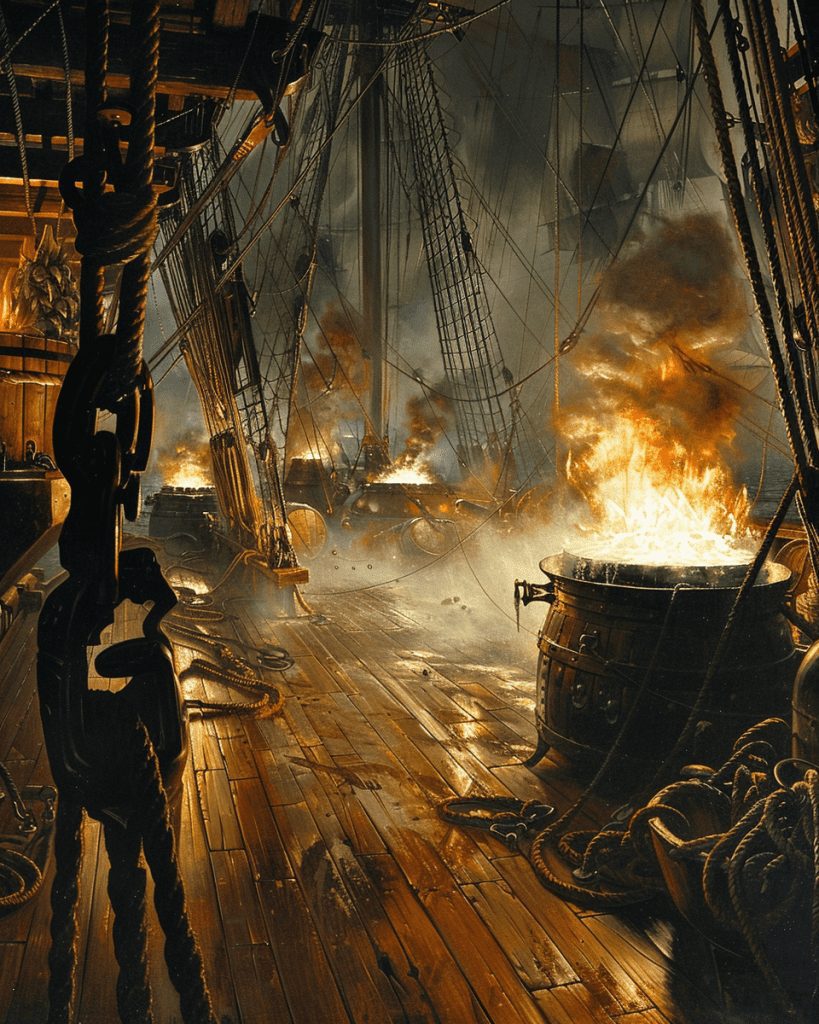The Kettle War of 1784 stands out as one of history’s most peculiar conflicts. This brief skirmish between the Holy Roman Empire and the Dutch Republic resulted in no casualties and only a single shot fired.
The Kettle War earned its name because the lone cannonball fired during the encounter struck a soup kettle on a Dutch ship. The conflict arose from tensions over access to Belgian ports, with the Holy Roman Emperor sending warships to assert control.
Despite facing a superior force, the Dutch emerged victorious through a combination of clever tactics and sheer luck. The Holy Roman Empire’s fleet, led by the impressive warship Le Louis, ultimately surrendered without inflicting any significant damage.
This quirky episode demonstrates how even seemingly minor incidents can shape international relations and leave lasting impressions on history.
Historical Context
The Kettle War emerged from complex political dynamics in 18th-century Europe. Tensions between the Dutch Republic and the Holy Roman Empire culminated in this peculiar conflict, shaped by shifting alliances and territorial disputes.
European Political Climate
In the late 18th century, Europe was a hotbed of political maneuvering. Major powers vied for dominance, forming alliances and engaging in territorial disputes. The balance of power constantly shifted as nations sought to expand their influence.
France and Great Britain were locked in a struggle for colonial supremacy. Meanwhile, smaller states like the Dutch Republic fought to maintain their independence and economic interests.
The Treaty of Paris in 1783 had recently ended the American Revolutionary War, reshaping global politics. This event indirectly influenced the conditions that led to the Kettle War.
The Dutch Republic
The Dutch Republic, also known as the United Provinces, was a major maritime and economic power. It consisted of seven autonomous provinces in the northern Netherlands. The republic’s wealth came from its thriving trade networks and colonial possessions.
However, internal political divisions weakened the Dutch Republic. Two factions emerged:
- The Orangists: Supporters of the House of Orange-Nassau
- The Patriots: Advocating for democratic reforms
These internal conflicts made the republic vulnerable to external pressures. The southern Netherlands, under Austrian control, sought to challenge Dutch dominance of the Scheldt River, a crucial trade route.
Austrian Succession
The Austrian Netherlands, roughly corresponding to modern-day Belgium, played a key role in the Kettle War. This territory came under Habsburg control following the War of Spanish Succession in the early 18th century.
Emperor Joseph II of Austria sought to assert his authority over the region. He aimed to open the Scheldt River to maritime traffic, challenging the longstanding Dutch monopoly on the waterway.
This move threatened Dutch economic interests and sovereignty. It led to rising tensions between Austria and the Dutch Republic, ultimately culminating in the Kettle War of 1784.
The Kettle War
The Kettle War of 1784 was a brief military confrontation between the Holy Roman Empire and the Dutch Republic. This peculiar conflict involved a single shot fired and an unlikely casualty – a soup kettle.
Causes of Conflict
Tensions between the Holy Roman Empire and the Dutch Republic had been simmering for years. The primary issue was control over the Scheldt River, a vital waterway for trade. The Dutch had been restricting access to the river since 1585, which greatly impacted the economy of the Austrian Netherlands.
Emperor Joseph II of the Holy Roman Empire sought to reopen the Scheldt for maritime trade. This move would benefit the port cities of Antwerp and Ghent, boosting their economic prospects. The Dutch, however, fiercely opposed this plan as it threatened their commercial dominance.
Major Events
The conflict reached its peak on October 8, 1784. Emperor Joseph II sent a small fleet to challenge the Dutch blockade of the Scheldt. The flagship Le Louis led the charge, accompanied by two other vessels.
In response, the Dutch dispatched a lone warship to confront the imperial fleet. As tensions mounted, the Dutch fired a single warning shot. This solitary cannonball struck the deck of Le Louis, hitting nothing but a soup kettle.
Surprisingly, this minor incident marked the end of the confrontation. The imperial fleet, despite its superior numbers, retreated without further engagement.
Aftermath and Consequences
The Kettle War, though brief and bloodless, had significant diplomatic repercussions. The Holy Roman Empire was forced to abandon its plans to reopen the Scheldt River.
This outcome reaffirmed Dutch control over the waterway.
The conflict highlighted the complex political landscape of Europe at the time. It demonstrated the Dutch Republic’s resolve to protect its interests, even against a much larger power.
The Treaty of Fontainebleau in 1785 formally ended the dispute. While the Scheldt remained closed, the Holy Roman Empire received a financial settlement from the Dutch.
This peculiar war became a footnote in history, remembered more for its unusual name than its military significance.

